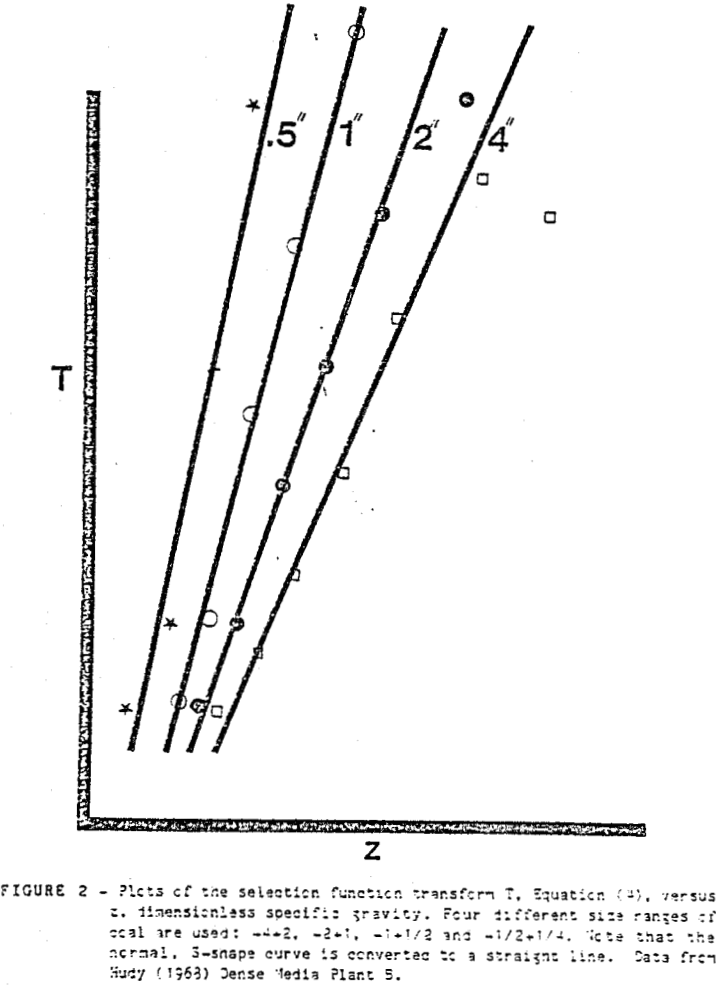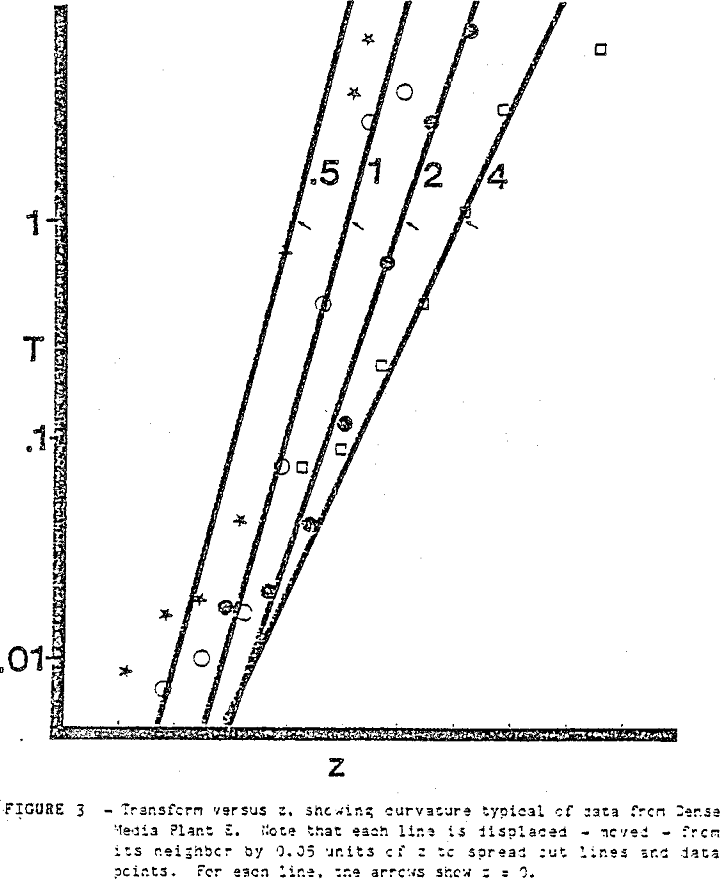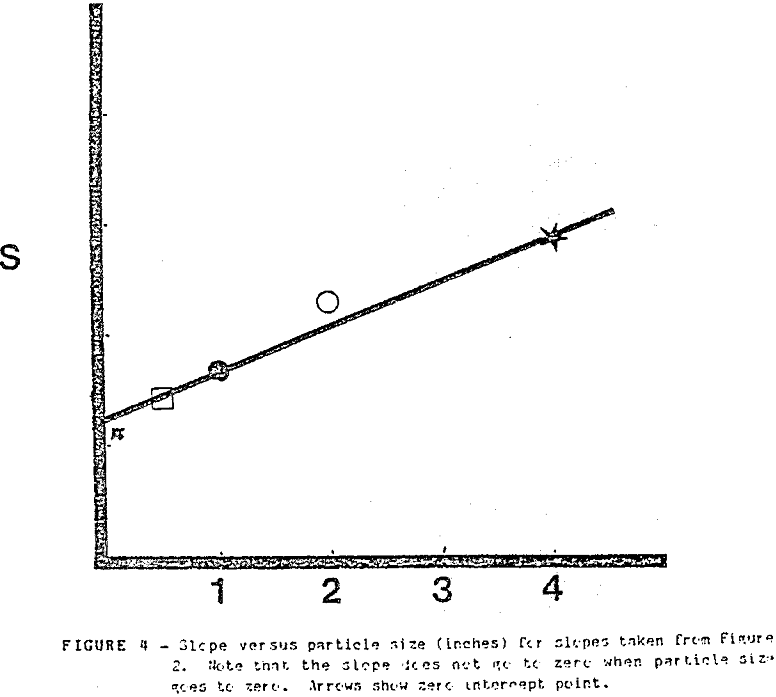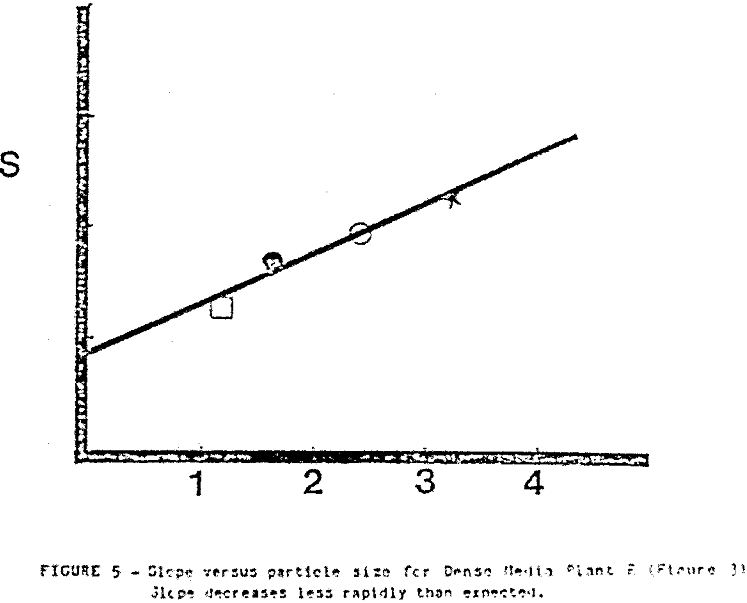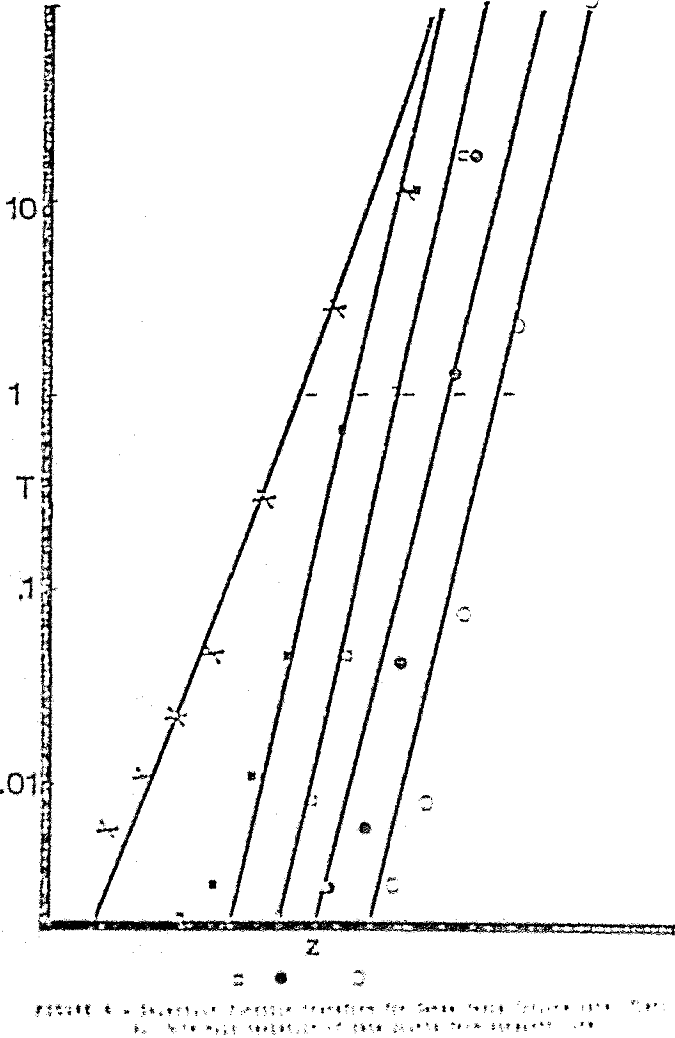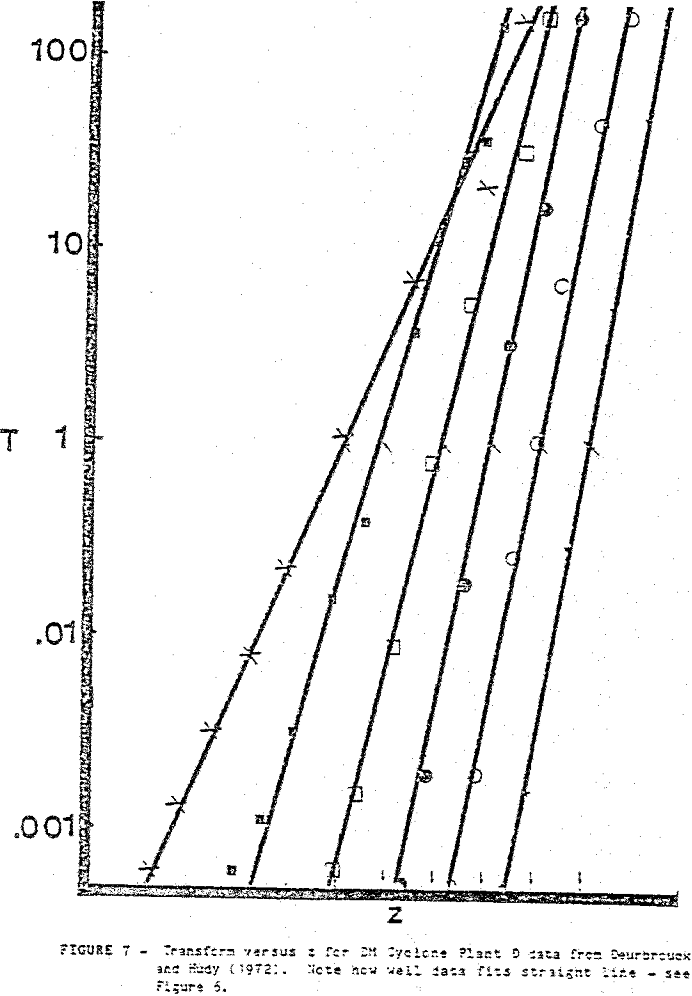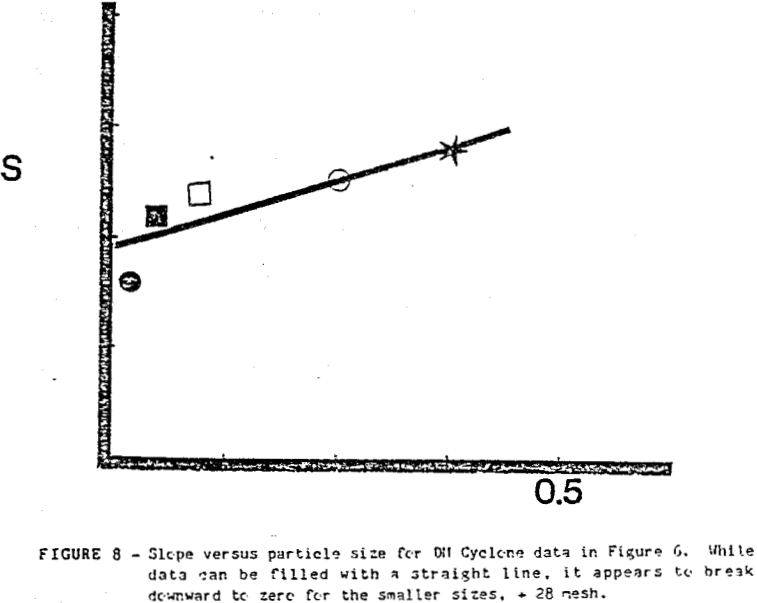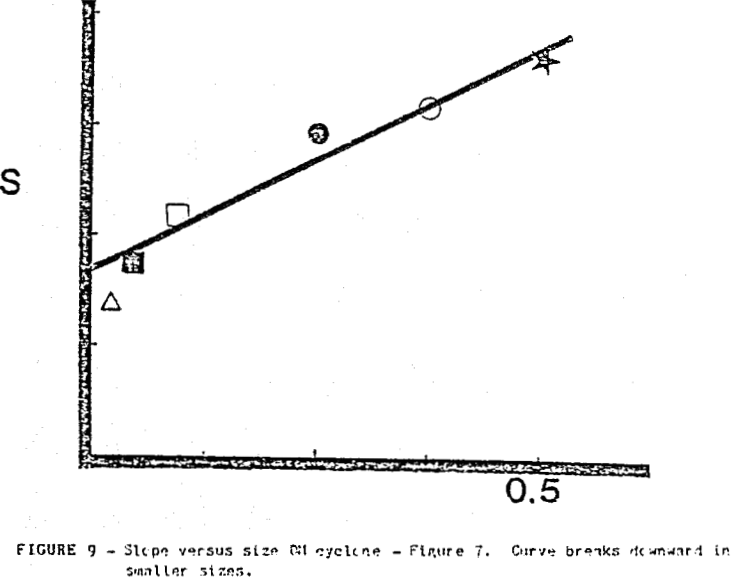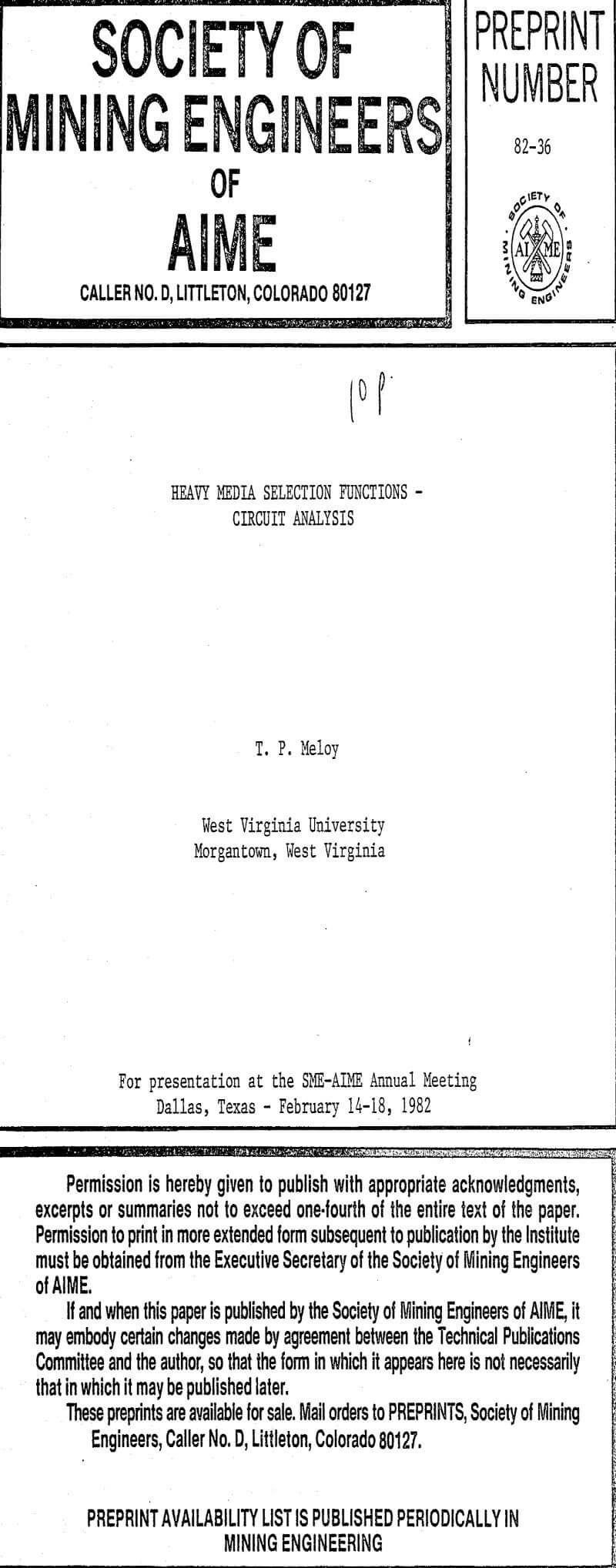Current coal cleaning technology uses heavy media (HM) for the recovery of coal in particles larger than 1/16 of an inch. Through the use of float sink measurements of the feed and products to commercial HM unit operations, a selection function, sometimes called Tromp curve in the coal industry, can be computed.
Samples respectively from industrial heavy media vessels and cyclones over a six hour period, from plants located primarily in West Virginia and one each from Pennsylvania, Kentucky and Illinois. This material was dried, sized and then float-sinked.
There are two broad results. First, the transform straightens the selection function data plot so that a straight line can be used to connect the points. From this line, an accurate measure of the selection function slope at the set point can be obtained. Secondly, a plot of the selection function of slope versus particle size shows a gradual decrease of the slope (efficiency) of the selection function with particle size for both (HM) vessels and cyclones. At the smaller sizes, the selection function slope (efficiency) begins to drop rapidly.
The evaluation of the actual density of the dense media vessel can lead to substantial errors in the lower size ranges. In the heavy media operation, the fine gangue minerals’ can increase the effect of density of the media with respect to the larger particles, but not the smaller ones. This may explain why the curve of the larger particles appears to be so poorly represented. In addition, a little statistical variation or error in the sink-float process can lead to substantial error in the lower left-hand part of the curve at low R values.

